The Intel Xeon Gold 6248R represents a radical departure from what we have seen for years with Intel Xeon CPUs. These 24-core parts offer higher clock speeds as a direct response to the competition offered by the AMD EPYC 7002 series “Rome” CPUs. They also have another notable impact: Intel is adjusting its SKU slider from power optimization to performance optimization as this is a 205W TDP part. In our review, we are going to see how INtel has transformed this segment of the market.
Key stats for the Intel Xeon Gold 6248R: 24 cores / 48 threads with a 3.0GHz base clock and 4.0GHz turbo boost. There is 35.75MB of onboard cache. The CPU features a 205W TDP. These are $2700 list price parts. Here is the ARK page with the feature set.
Here is the lscpu output for the Intel Xeon Gold 6248R:
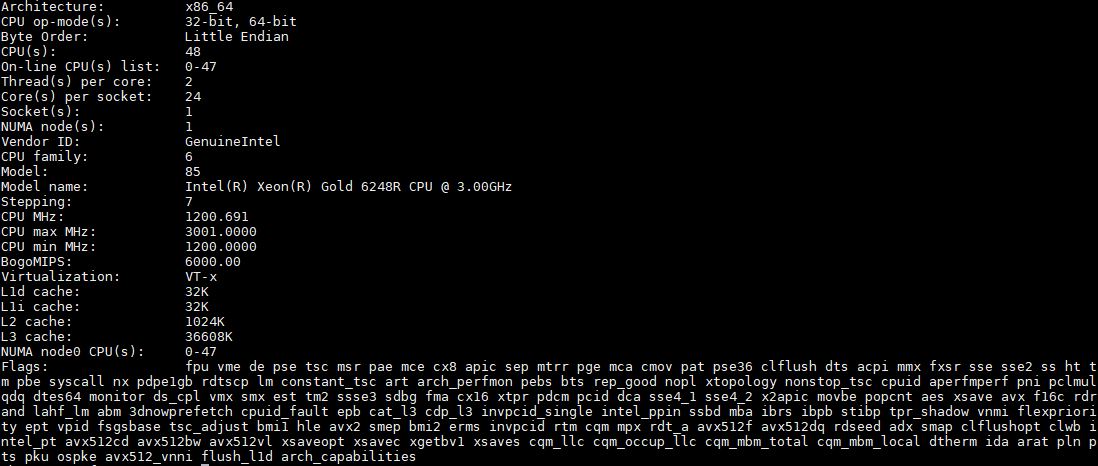
The Xeon Gold 6248R is more similar to the original Platinum 8268 launch SKU but with a few key differences. The Xeon Gold refresh part gets 100MHz higher base and turbo frequencies and a discount of over 57% versus the Platinum part. While the Xeon Platinum part can scale to 4 and 8-socket configurations, the Xeon Gold 6248R is designed only for 2-socket operation.
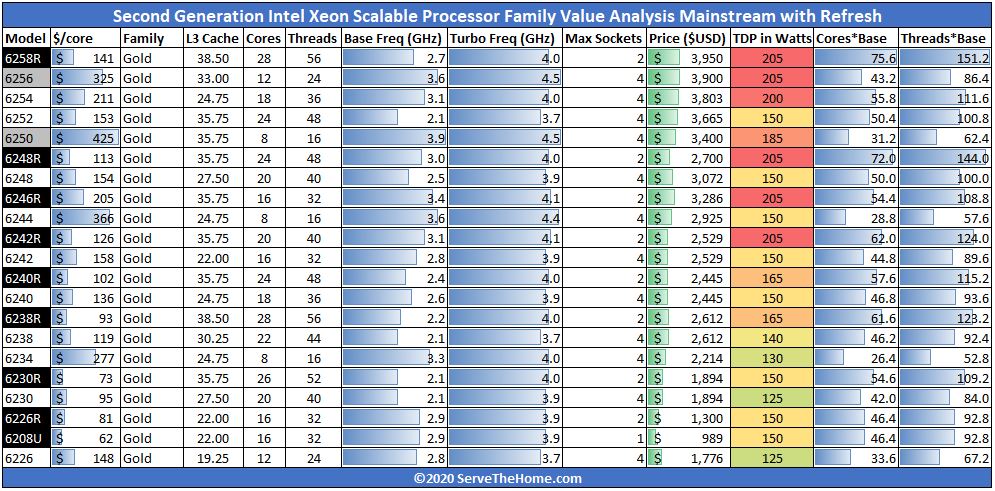
At $2700, it is also offered at a $372 discount versus the Xeon Gold 6248 yet it has more cores, cache, and higher clock speeds. One sacrifices 4-socket operation but gains an enormous set of computing resources at a lower price. The part also jumps from a 150W TDP level to a 205W TDP level. There are platforms on the market, as we saw in our Big 2nd Gen Intel Xeon Scalable Refresh Brings Competition Anew piece, that do not support 205W TDP so some buyers will need to take care and check this facet before updating their specs.
Make no mistake, this is an enormous move in this segment and if you previously used the Xeon Gold 6248, the Gold 6248R is going to be an enormous upgrade with higher clock speeds, more cache, and cores, all at a lower price.
Test Configuration
We wanted to give some sense of the performance one can see with the new SKUs over the older generation parts with similar names. As a result, we have Intel Xeon Gold 6248 processors along with Intel Xeon Gold 6248R CPUs in a testbed, specifically the Supermicro SYS-2029UZ-TN20R25M or “2029UZ-TN20R25M” server.
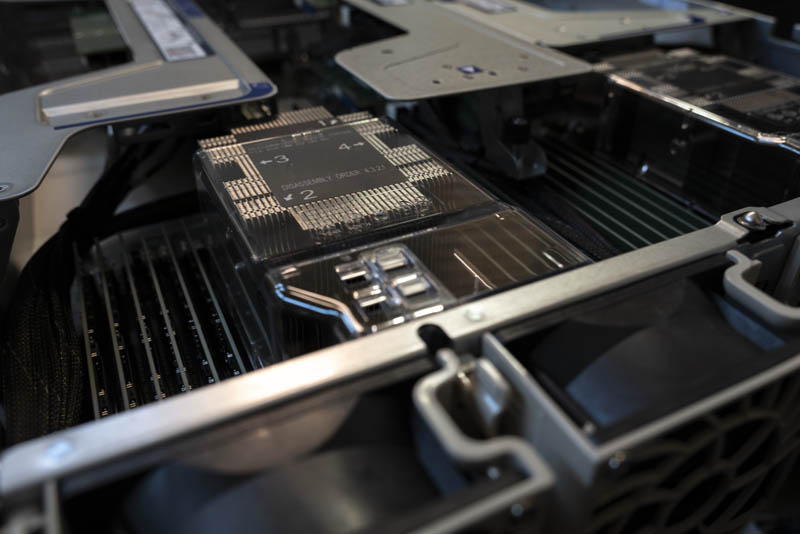
The Supermicro 2029UZ-TN20R25M is a 2U dual-socket server that is part of the company’s “Ultra” line meant to compete in the higher-end of the server market. We requested this server specifically because it has 20x NVMe SSD bays, it supports Intel Optane DCPMM, and it has built-in 25GbE. 25GbE is a major networking trend and we have already started doing overviews of 25GbE TOR switches such as the Ubiquiti UniFi USW-Leaf 48x 25GbE and 6x 100GbE switch overview and the Edgecore AS7712-32X Switch Overview. We have done adapter reviews such as the Supermicro AOC-S25G-i2S, Dell EMC 4GMN7 Broadcom 57404, and the Mellanox ConnectX-4 Lx. We also have more 100GbE switch reviews in the publishing queue so we wanted to start focusing on the new systems.
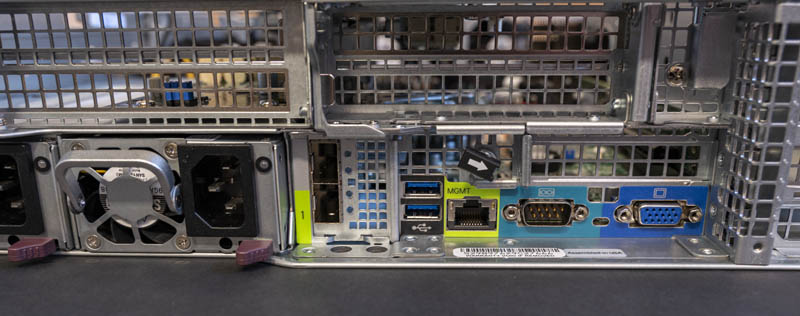
This Supermicro 2029UZ-TN20R25M platform is significant for another reason. It supports 205W TDP CPUs. Not all Intel Xeon Scalable platforms can support 205W TDP CPUs and we needed that for our testing since Intel added a lot more performance but also has increased power consumption by 55W moving from the Xeon Gold 6248 to the Gold 6248R.
For this reason, we wanted to use the Supermicro 2029UZ-TN20R25M which is a higher-end platform capable of handling this type of CPU.
- System: Supermicro 2029UZ-TN20R25M
- CPU: 1x Intel Xeon Gold 6248R
- Memory: 6x 32GB DDR4-2933 DDR4 DRAM
- OS SSD: 1x Intel DC S3710 400GB Boot
- NVMe SSDs: 4x Intel DC P4510 2TB
As a quick note here, we were able to install these CPUs without requiring new fans or power supplies in the system. Dell has stated that, on average, they get similar per-socket performance gains but at an average system premium of 3%. With Supermicro’s current lineup, performance fans and power supplies are standard so one can access these performance gains without a similar price uplift.
Next, it is time to get to our benchmarks.

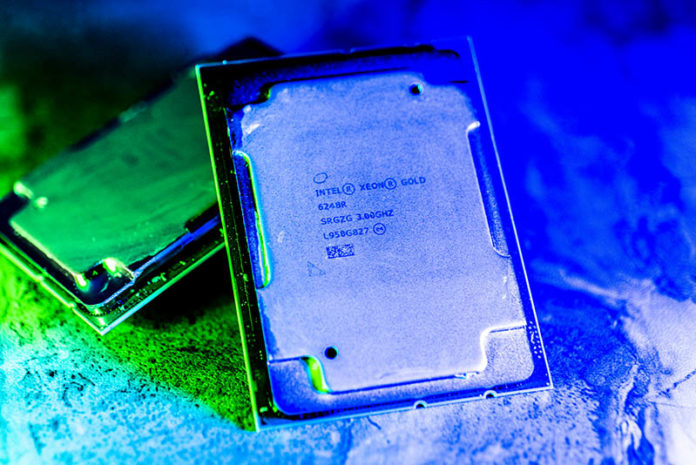



Still a pretty good margin for Intel (cost price ~$400, list price ~$2,700).
Good to see that Intel is also lowering the prices for SMB customers (list price) and not only focussing on corperate customers who get hugh discounts(400% being no excetion these days to keep market share).
Great job, STH!
Could you run also the SPECworkstation benchmark as you did for other CPUs?
These CPUs are used in server environment, but also for workstations…
Thanks
I think the R suffix better denotes “RENAME” rather than “REFRESH”. It does not look like Intel has done an extensive research in making the R Series SKUs. Rather I will see it as Intel, to protect their share of market renamed Platinum class SKUs and sell it at a much lower price as that of Gold. However, as you mentioned bringing a $6300 part performance to $2700 part will be a good deal for customers to explore but I will say with a caution, Intel has released many short term SKU without appropriate future plans.
It would be great if you can run Intel Optimized HPL publish the sustained numbers as a comparison for 6248 and 6248R. I overheard the sustained performance are comparably not so great.